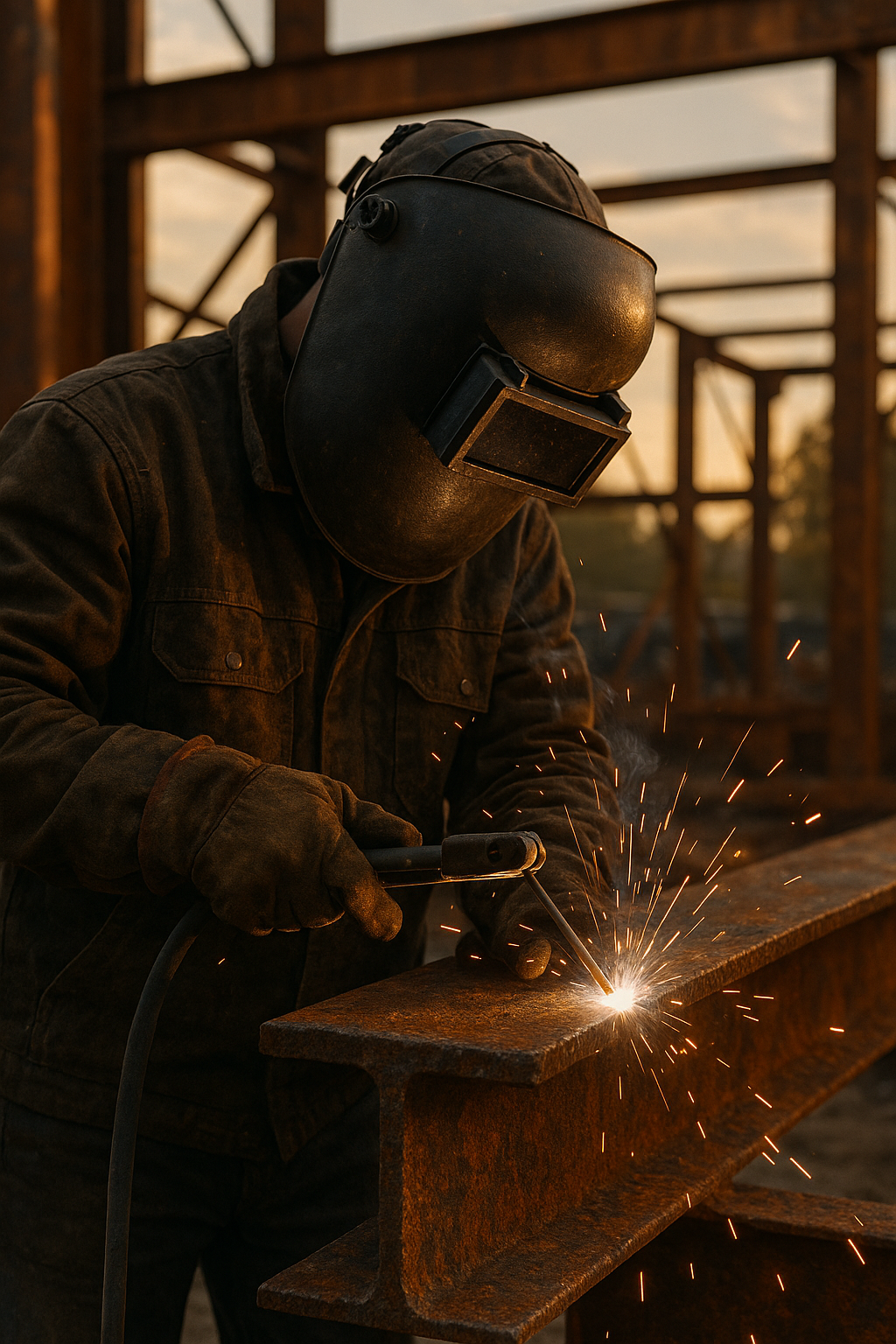Introduction
When it comes to Stick Welding (SMAW), the welding electrode holder is one of the most essential tools in your setup. Often overlooked compared to machines and rods, the holder is what physically carries the electrode, and your arc stability and control depend on it.
Whether you’re a pipeline welder, structural fabricator, or welding student, understanding electrode holders and choosing the right one can significantly affect your comfort, productivity, and weld quality. In this article, we’ll break down the types, specs, and selection tips for electrode holders so you can make an informed choice for your next welding project.
Types of Welding Electrode Holders
Electrode holders are typically classified by design, amp rating, and insulation type. Here are the main variants:
1. Clamp Style Electrode Holders
-
Uses a spring-loaded or twist mechanism to clamp the rod.
-
Popular Brands: Tweco, Lincoln, ESAB.
-
Best for: General-purpose SMAW, shop, and fieldwork.
2. Twist-Grip Electrode Holders
-
Electrodes are inserted and locked in with a twist.
-
Benefit: More secure grip under high amperage.
-
Downside: Slightly slower rod change time.
-
Common in: Industrial and heavy-duty applications.
3. Insulated Electrode Holders
-
Features high-dielectric, heat-resistant insulation.
-
Ideal for: Safety-critical environments like wet or cramped areas.
-
Tip: Look for thermoset vs. thermoplastic shells.
4. Open-Head Holders
-
No insulation near the head—often lighter.
-
Use With Caution: Offers less protection from arc flash and heat.
-
Rarely Used: Mostly outdated or specialty use cases.
Key Characteristics and Technical Specifications
When selecting a welding electrode holder, match the technical specs to the demands of your job:
Amperage Rating
-
200–300 Amps: Light to medium-duty applications (farm, hobbyist, light fab).
-
400–600 Amps: Heavy-duty industrial use (pipelines, shipbuilding, structural steel).
Example: A 400A holder paired with a 1/8” 7018 rod offers enough headroom for sustained overhead welds without overheating.
Cable Size Compatibility
-
Match the holder to your cable gauge (e.g., 1/0, 2/0).
-
Larger cables offer less resistance and can carry more amperage safely.
Jaw Type and Angle
-
Look for multi-angle rod positions (e.g., 45°, 90°).
-
Enhances reach and comfort in positional welding (especially vertical or overhead).
Insulation Material
-
Thermoset (Bakelite, Phenolic): Heat and impact-resistant, doesn’t melt.
-
Thermoplastic: Less durable under continuous heat but cheaper.
Process Considerations
How Electrode Holders Integrate With SMAW
-
Compatibility: Designed solely for SMAW; not interchangeable with TIG or MIG torches.
-
Cable Lugs: Most holders attach via screw-on or crimp-type connectors—check your setup.
-
Grounding Matters: A poor-quality holder can cause voltage drop and arc instability.
-
Glove Fit: Consider handle thickness and texture—too slick or bulky can fatigue your grip.
Pro Tip: If you frequently weld in tight spots, prioritize a holder with a smaller head and high-temperature insulation.
Application Use Cases
Common Welding Projects Using Electrode Holders:
-
Pipeline Welding: High-amperage, long duty cycles demand heavy-duty holders.
-
Structural Steelwork: Requires secure grip for vertical and overhead positions.
-
Repair Work in the Field: Insulated, lightweight holders reduce fatigue and increase safety.
-
Educational Settings: Durable, low-cost holders with basic clamp design are ideal.
Material Compatibility: Electrode holders work with all SMAW-compatible filler metals (e.g., E6011, E7018), but amperage and duty cycle must match the rod’s requirements.
Best Practices & Pro Tips
-
Always inspect for wear: Loose jaws or burned insulation can lead to dangerous failures.
-
Keep it cool: Let the holder cool between long passes to avoid internal damage.
-
Match rod angles: Choose holders that support the typical angle for your work (flat vs overhead).
-
Use anti-spatter spray: Prevent buildup on the jaws for consistent conductivity.
-
Label your amperage: Mark your holders by their rating if you use more than one in the shop.
Safety Notes
-
Never use a damaged holder—cracks in insulation can arc through gloves.
-
Don’t lay the holder on grounded metal—can create live connections.
-
Store vertically or hang on an insulated hook to avoid accidental shorting.
Conclusion
A welding electrode holder isn’t just a clamp—it’s your direct link to the arc. Choosing the right one based on amperage rating, insulation quality, and jaw angle can dramatically improve your welding control and safety.
If you weld regularly, investing in a high-quality holder that matches your cable and rod needs is a smart move that pays off in arc stability, comfort, and durability.
- Sold on Amazon
Last update on 2025-12-05 / Affiliate links / Images from Amazon Product Advertising API
- 6 Position Jaw Pattern
- Max: 300 Amp
- Max: 2/0 Cable
- Max Electrode Size: 7/32″
- 10″ Overall Lenght
Last update on 2025-12-05 / Affiliate links / Images from Amazon Product Advertising API
- Accepts up to 2/0 welding cable
- 1/4″ – max electrode size
Last update on 2025-12-05 / Affiliate links / Images from Amazon Product Advertising API
Last update on 2025-12-05 / Affiliate links / Images from Amazon Product Advertising API
- Sale Unit: EACH
Last update on 2025-12-05 / Affiliate links / Images from Amazon Product Advertising API
We may earn a small commission from affiliate links at no extra cost to you, which helps support our educational content.







Leave a Reply